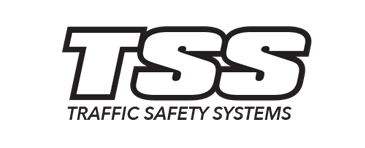
8 Safety Tips for the Workplace
The workplace is where you spend the majority of your time during the week, so you’ll want to make sure that it’s safe and secure as possible. While this may sound like common sense, accidents can happen if you’re not careful, and you could be held liable as an employer if one of your employees is hurt while at work. Follow these eight safety tips to create an efficient and safe workplace environment for yourself and your employees so that you can all spend more time focusing on your jobs rather than worrying about injury.
1) Safety first
Whether you’re an employee or a manager, workplace safety is always important. At work, everything can seem stressful and fast-paced—and it’s easy to forget your personal health or safety in these situations. But when accidents happen, they almost always stem from complacency—which makes them eminently preventable. Always keep safety front of mind.
2) Follow procedures
In most cases, a company will have established procedures and standards of conduct to keep everyone safe at work. By following these procedures and acting according to company policy, everyone can dramatically reduce their risk of injury. If a procedure is unclear or open to interpretation, ask questions before proceeding. This may seem like common sense, but it’s easy to get distracted or feel rushed when at work and lose focus on safety—and if a co-worker doesn’t follow a procedure correctly, it could hurt both of you.
3) Learn as you go
Working in a fast-paced environment or as part of a large group can feel intimidating for some. Take it slow, learn what you can, ask questions, and offer solutions along the way. Employers are legally required to provide their employees with basic safety equipment (such as respirators, earplugs, and protective eyewear). If workers have any questions about what is provided or don’t have access to certain items, talk with a supervisor. If something doesn’t seem right, there might be an issue with your employer—speak up and report problems.
4) Stay calm and act quickly
When you’re in an emergency situation at work, it’s important to stay calm and act quickly. The stress response can cause panic, which can lead to a host of problems. If you feel like your heart is racing or you’re feeling lightheaded, slow down and catch your breath before jumping into any action plan. Once you’ve regained your composure, start thinking about what sort of immediate action should be taken. Can other people help? What steps will save lives? When it comes to safety in the workplace, everyone must take their job seriously.
5) Think safety first
Many people don’t think about workplace safety until an accident happens, but it should be considered from day one. It only takes a few moments to choose safe tools and equipment—and if you do so, your entire team will stay safe from harm. Accidents can be extremely costly, not just financially but emotionally as well. Don’t let a single moment ruin your hard work; always make safety a priority in your workspace.
6) Keep your tools maintained
It’s a good idea to routinely check your tools and machinery to make sure they’re in working order. An improperly sharpened tool, or broken machine, can lead to slip-ups and accidents on job sites. It’s also a good idea to have a backup tool around if one breaks or malfunctions during work hours.
7) Use protective equipment
Personal protective equipment (PPE) is an important part of keeping yourself safe at work. If you’re required to wear safety glasses, ensure that you have a pair that fits properly—they should be comfortable and fit snugly on your face, so they don’t fall off during a job. You can protect your hands by wearing gloves made specifically for workplace safety or using cut-resistant gloves. Long sleeves and pants provide extra protection against cuts and injuries to your arms and legs.
8) Clean up after yourself
Cleaning up after yourself in your workspace helps ensure a safer work environment by eliminating potential hazards and preventing accidents from occurring. Employers should have cleaning checklists in place, so all workers are aware of protocols.




